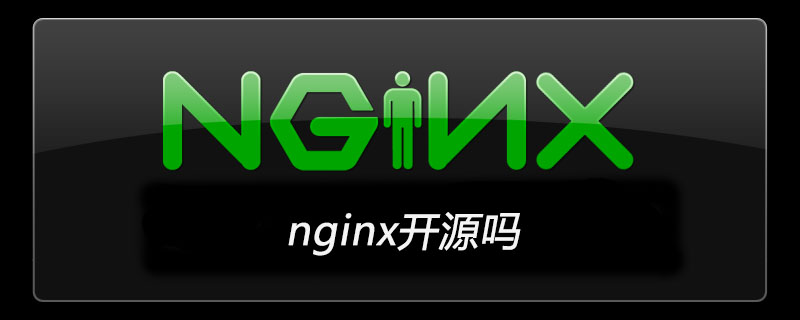
Nginx is a free, open source, high-performance HTTP server and reverse proxy server; it is also an IMAP, POP3, and SMTP proxy server; Nginx can be used as an HTTP server for website publishing and processing. In addition, Nginx can be used as a reverse proxy to implement load balancing.
It releases source code under a BSD-like license and is known for its stability, rich feature set, sample configuration files, and low system resource consumption. On June 1, 2011, nginx 1.0.4 was released.

The emergence of Nginx
Apache has had a long development period and is the undisputed number one in the world. server. It has many advantages: stable, open source, cross-platform, etc. It has been around for too long. In the era when it emerged, the Internet industry was far inferior to what it is now. So it's designed to be a heavyweight. It does not support high-concurrency servers. Running tens of thousands of concurrent accesses on Apache will cause the server to consume a lot of memory. The switching between processes or threads by the operating system also consumes a large amount of CPU resources, resulting in a reduction in the average response speed of HTTP requests. These all determine that Apache cannot become a high-performance WEB server, and the lightweight high-concurrency server Nginx came into being.
Nginx is popular with these specific features:
Nginx uses an event-driven architecture, allowing it to support millions of TCP connections
The high degree of modularity and free software licenses result in the endless emergence of third-party modules (this is an era of open source~)
Nginx is a cross-platform server that can run on Linux, Windows, FreeBSD, Solaris, AIX , Mac OS and other operating systems
These excellent designs bring great stability
Forward proxy
Forward proxy, "It proxies the client", which is a server between the client and the origin server. In order to obtain content from the origin server, the client sends a request to the proxy and specifies the target (origin server), and then the proxy Forward the request to the origin server and return the obtained content to the client. The client must make some special settings to use the forward proxy.
Use of forward proxy:
(1) Access resources that were originally inaccessible, such as Google
(2) Caching can be done to speed up access to resources
(3) Authorize client access and authenticate online
(4) The agent can record user access records (online behavior management) and hide user information from the outside
Reverse Proxy
Requests sent by multiple clients to the server are received by the Nginx server and distributed to the back-end business processing server for processing according to certain rules. At this time, the source of the request, that is, the client, is clear, but it is not clear which server handles the request. Nginx plays the role of a reverse proxy.
The client is unaware of the existence of the proxy. The reverse proxy is transparent to the outside world. Visitors do not know that they are accessing a proxy. Because the client does not require any configuration to access. Reverse proxy, "it acts as a proxy for the server", is mainly used in the case of distributed deployment of server clusters. The reverse proxy hides the server information.
The role of the reverse proxy:
(1) To ensure the security of the intranet, the reverse proxy is usually used as the public network access address, and the Web server is the intranet
( 2) Load balancing, using a reverse proxy server to optimize the load of the website
For more Nginx related technical articles, please visit the Nginx Usage Tutorial column to learn!
The above is the detailed content of Is nginx open source?. For more information, please follow other related articles on the PHP Chinese website!
 nginx restart
nginx restart
 Detailed explanation of nginx configuration
Detailed explanation of nginx configuration
 Detailed explanation of nginx configuration
Detailed explanation of nginx configuration
 What are the differences between tomcat and nginx
What are the differences between tomcat and nginx
 How to export word from powerdesigner
How to export word from powerdesigner
 What are the data conversion methods in golang?
What are the data conversion methods in golang?
 css background code collection
css background code collection
 How to solve the problem that js code cannot run after formatting
How to solve the problem that js code cannot run after formatting